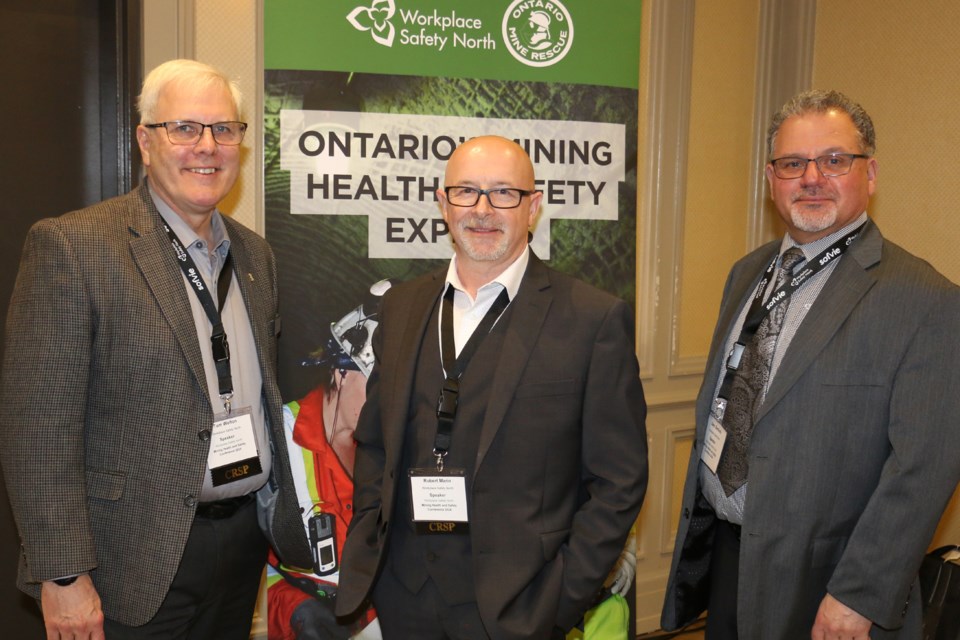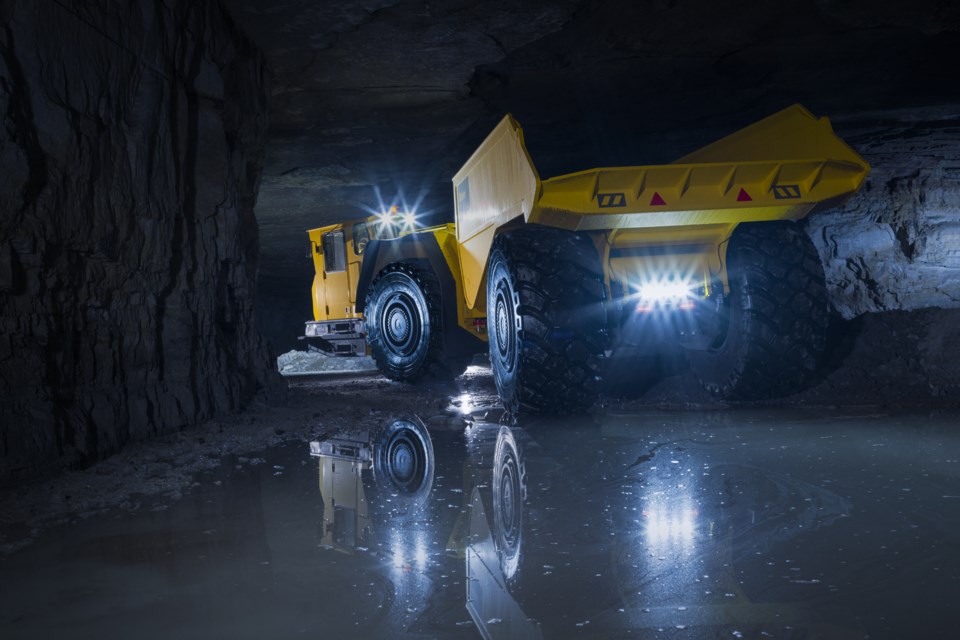The evolution of mining safety in Ontario has changed in the past 10 years to show that some of the newer technology has become a safety concern when compared with issues that were regarded as safety concerns in 2014.
The changes were part of a discussion held in Sudbury last week when Workplace Safety North (WSN) held a mining health and safety conference. WSN is the Sudbury-based organization that oversees mining safety in Ontario.
For example, ground control and underground rock bursts were the No.1 issue recorded in 2014 in surveys of mine workers, supervisors and employers. Ten years later, the survey done in 2023 revealed that collisions and interaction between large and smaller pieces of mobile equipment and traffic control underground was the top concern.

Ground control for such things as loose rock at the face, ground instability, rockface not scaled or secured and fall on ground while installing ground support were the No. 3, 4, 5, and 9 safety concerns, in 2014.
The No. 2 concern that year was mobile equipment interaction with pedestrians, what happens when a mining vehicle hits a miner working or walking along a drift.
In the 2023 survey, ground control was moved to No. 5.
Ten years later, the survey showed that mobile equipment versus pedestrian is still the second highest concern for safety underground.
Tom Welton, director of health and safety services and education programs at WSN, said the concern about mobile vehicles has taken a new twist with the introduction of battery-electric vehicles. Welton said BEVs are very quiet and that is something "that wasn't on the radar" in 2014.
"With battery electric vehicles, they're very quiet," said Welton.
"So interaction between machine to machine where you have a loud, smelly diesel piece of the equipment that you use to be ready to hear coming towards you. Well, now you have a very quiet battery electric piece of equipment that you may not see or hear coming because you're expecting to hear that loud diesel piece of equipment. Or around corners, just suddenly it's there because you're not hearing what you'd heard before," he said.
He added that the introduction of BEVs has inspired annual forums where challenges are discussed and solutions are suggested.
He said one of the solutions for quiet BEVs could be proximity detection devices used to detect miners on foot or working nearby when a large, but quiet, battery electric vehicle is traveling through an area.
While physical injuries are a concern in mining so is the problem of people getting sick, said Welton. He said occupational disease through exposure to airborne hazards and substances is a continuing issue for underground miners.
"This is something that we've known in the mining industry is a significant concern and we're recognizing how significant that is," said Welton.
"And there's information here in relation to noise-induced hearing loss from 2014, where there were 80 claims in that program in that particular year compared to 2020 with 154. So almost twice the number of claims," said Welton.
He added that other occupational health concerns are increases in respiratory diseases and chronic circulatory system diseases. He said further information will be available and included on the WSN website.
2014 top 10 health and safety risks in underground mines were:
- Ground Control - rock bursts.
- Mobile Equipment - large vehicle versus pedestrian.
- Ground Control - loose rock at face.
- Ground Control - ground instability.
- Ground Control - face not scaled/secured.
- Mobile Equipment - visibility/blind spots.
- Occupational Disease - exposure to airborne hazardous substances.
- Fatigue - shift work.
- Ground Control - fall of ground while installing ground support.
- Training - inexperienced or improperly trained supervisors.
2023 top 10 health and safety risks in underground mines were:
- Interaction with Mobile Equipment - collision with other vehicles.
- Interaction with Mobile Equipment - vehicle versus pedestrian.
- Adoption of new technology - battery electric vehicle fire or explosions, injury to workers and mine rescue.
- Worker injury - manual handling or repetitive strain injury.
- Ground Control - failure causing injury.
- Occupational Disease - exposure to airborne hazardous substances.
- Interaction with mobile equipment - collision with infrastructure, conveyors, towers.
- Inadvertent contact with stored energy, electricity.
- Hearing Loss.
- Major fire underground from mobile equipment.
Source: Workplace Safety North
Len Gillis covers mining news along with healthcare for Sudbury.com .
